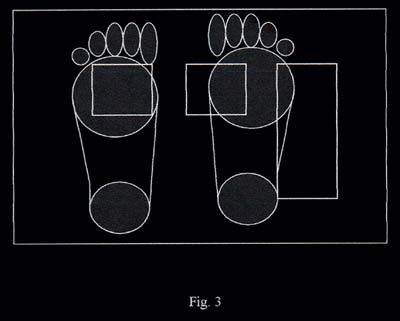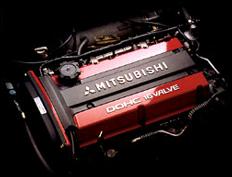Heel and Toe Downshifting
The purpose of heel and toe downshifting is simple. It allows the driver to both slow the car and select the proper gear for a corner. If the downshifting and braking are finished by the turn-in point, the driver can concentrate on the proper line and exit through the corner. This greatly increases exit speed and lowers lap times.
The heel toe downshift is simply a technique that minimizes the imbalance on the car while downshifting. A second benefit is that it is much easier on the engine and drive train than simply selecting a lower gear and releasing the clutch. Unfortunately, the technique can be described here, but can only be learned by practice. Practicing the technique in your daily driving is the best way to have it for the track on the weekend.
Heel Toe Downshift Sequence
Position your foot on the brake pedal so that you can roll your foot across its ball and catch the throttle pedal. With your feet positioned as noted in Fig. 3, the driver can apply pressure to the brake pedal and depress the accelerator pedal simultaneously for down shifting.
- Move the right foot from the throttle to the brake pedal. Position your right foot as described above.
- Apply pressure to the brake pedal.
- Depress the clutch.
- Move the shift lever to neutral.
- With the ball of your right foot, depress the throttle pedal until the engine is rotating at the appropriate speed for the next lower gear. This is called a "blip" and should sound just like revving the engine. Remember that you are slowing the car for a corner. Keep on the brake.
- Just at the peak of the throttle "blip", select the next lower gear and release the clutch.
This whole process should take well under a second per shift. The car should decelerate smoothly and rapidly. You should emerge from the braking zone in the correct gear with even weight distribution on all four wheels of the car ready to enter the first phase of the corner.
Double Clutching
This alternate method uses a "double clutch". It is used more with non-synchromesh transmissions. Some drivers prefer this method, as well executed, it is extremely easy on transmissions.
- Move the right foot from the throttle to the brake pedal. Position your right foot as described above.
- Apply pressure to the brake pedal.
- Depress the clutch.
- Move the shift lever to neutral.
- Release the clutch.
- With the ball of your right foot, depress the throttle pedal until the engine is rotating at the appropriate speed fo the next lower gear. This is called a "blip" and should sound just like revving the engine. Remember, you are slowing the car for a corner. Keep on the brake.
- Just at the peak of the throttle "blip", depress the clutch and select the next lower gear.
- Release the clutch.
- Part 1: Race Track Safety
- Part 2: Racing Line
- Part 3: Basic Car Control: Braking, Steering, Throttle Input
- Part 4: Heel Toe Downshifting, Double Clutch
- Part 5: Race Track Flags

